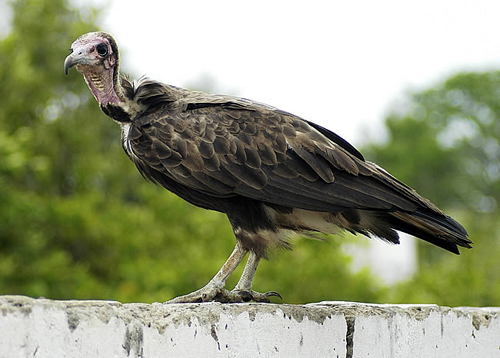Hooded vulture
(Necrosyrtes monachus)

Description
The Egyptian vulture Pileated ( hooded monachus Temminck,1823 ),the only species of the genus hooded Gloger,1841,is a bird of prey of the family of Accipitridae original of ' sub-Saharan Africa.Despite the name and a certain external resemblance,it is by no means related to the Egyptian vulture ( Neophron percnopterus ),which belongs to another subfamily,the Gipetini The pileated vulture is the smallest and least impressive representative of its subfamily,the Gipinis.It measures 62-72 cm in length and has a wingspan of 155-165 cm.It weighs 1500-2600 g;the females are slightly larger than the males.The adults present the back of the neck covered with white quilt,which forms a sort of hood on the head,and a collar of white feathers.The bare skin of the face,generally greyish,can assume a bright pink,red or even bluish hue when the animal is agitated,following the dilation of the blood vessels of the neck and head.This reaction is completely involuntary,and seems to be a form of alarm for the likes.When it is frightened,the skin becomes pale or greyish-white.TheThe plumage of the pileated peafowl is chocolate-colored with a little white feathers on the chest and thighs,more accentuated in the young.The beak,long and thin,makes the bird easily identifiable.In flight,its wings appear shorter,wider and less pointed than those of the Egyptian vulture.At their ends we can distinguish six "fingers" (the primary remiges) instead of the five of the Egyptian vulture.The tail is square,not pointed,and is entirely black.The adults present a characteristic design on the under-wing,consisting of the light bases of the remiges.The irisit is brown and grayish-gray or greyish.Young people resemble adults,but have head and neck covered with a brown quilt,dark goiter,face and front of gray-pink neck,and do not have any design on the sub-wing
Taxonomic tree:







